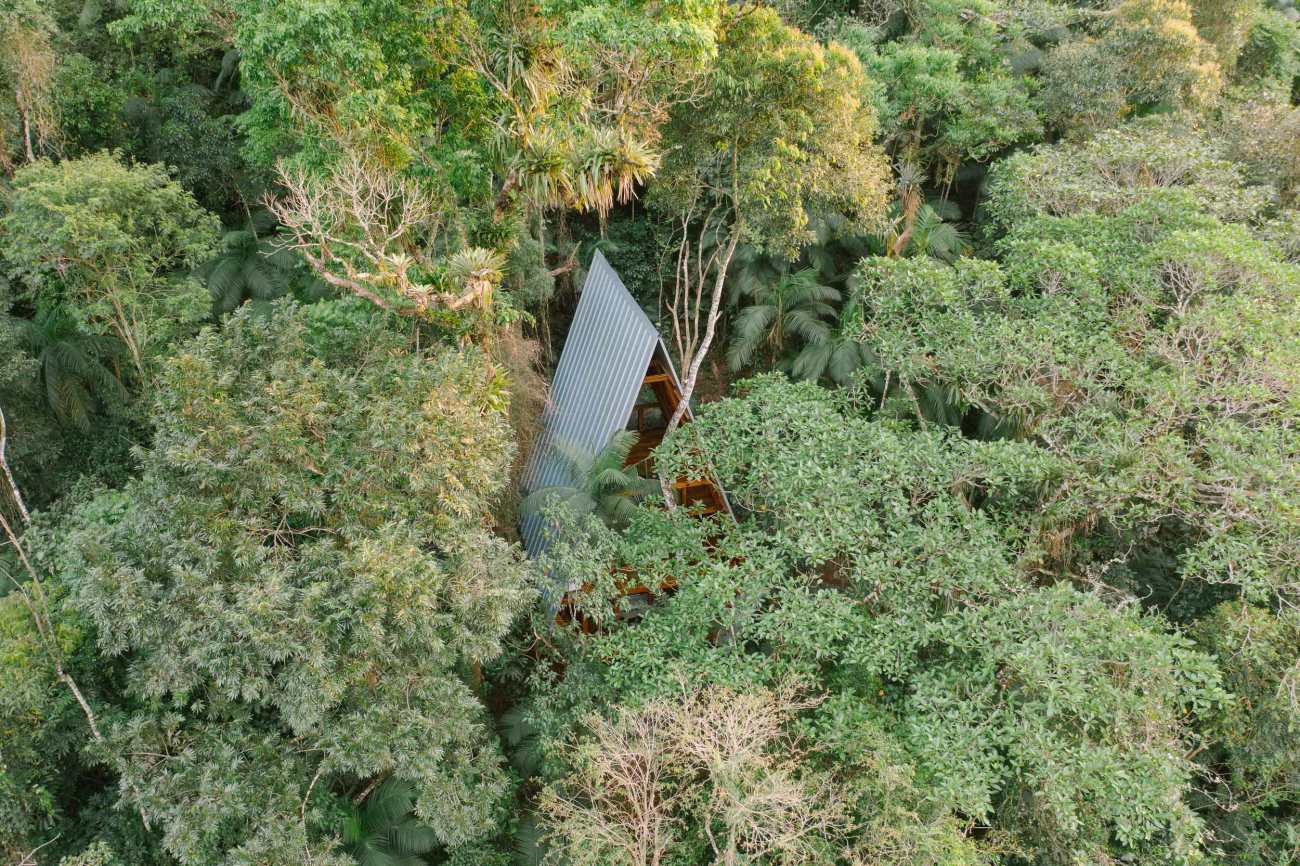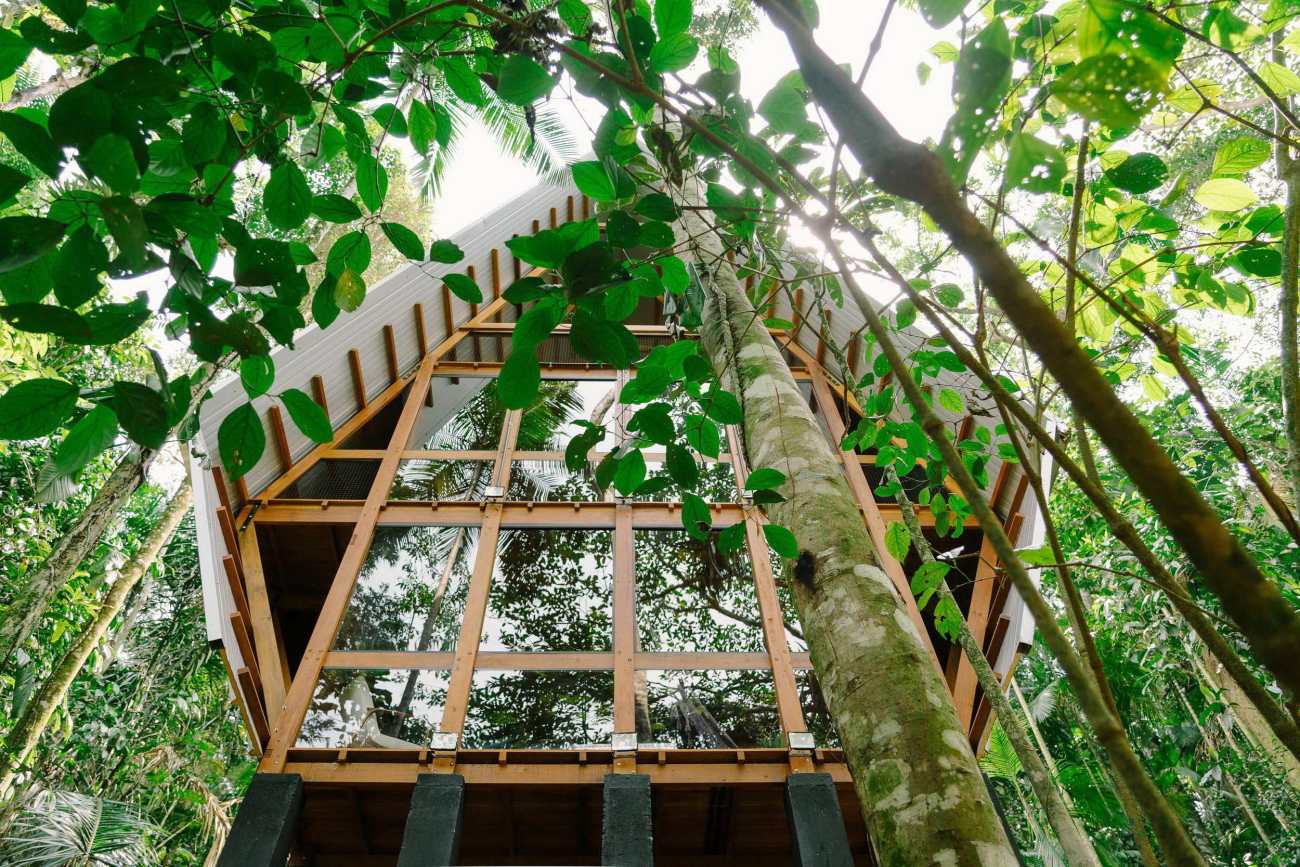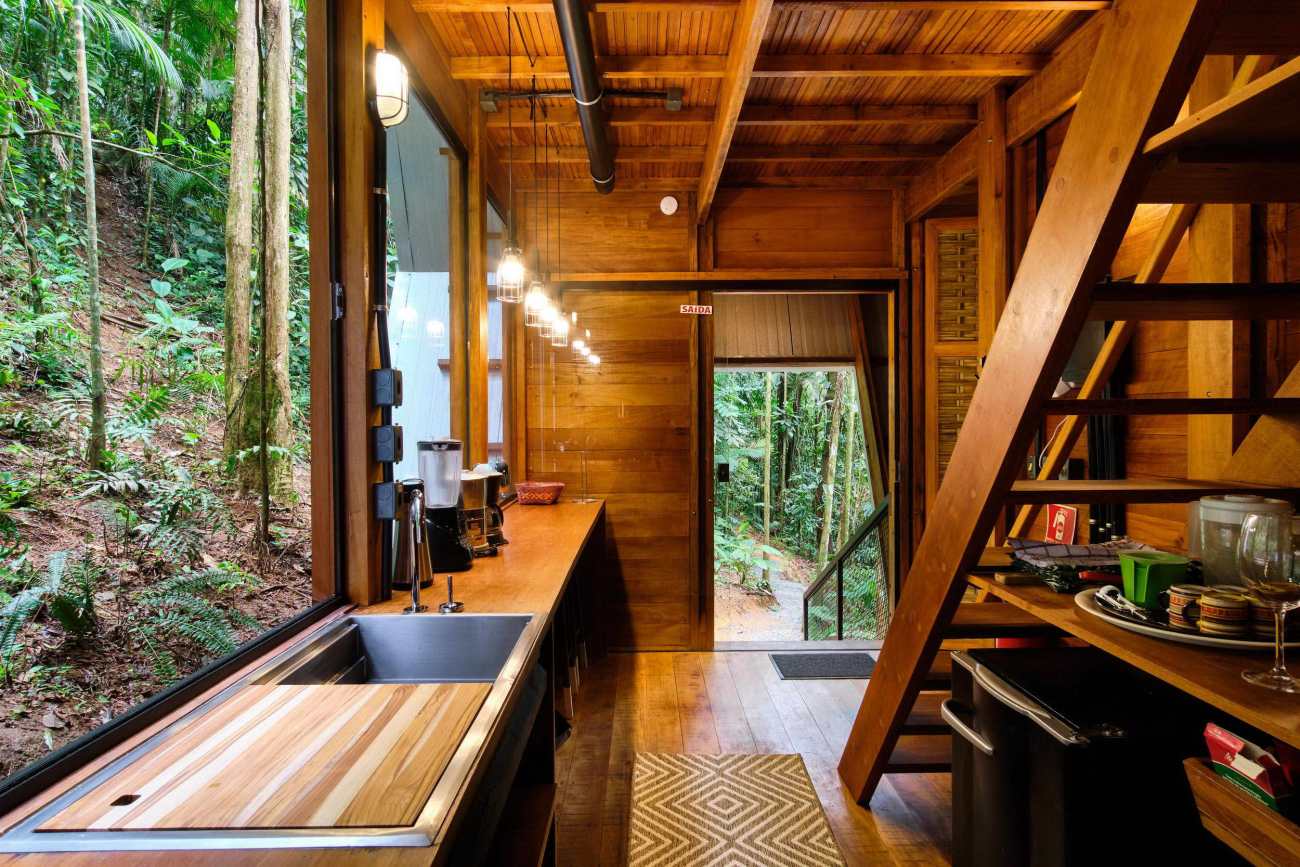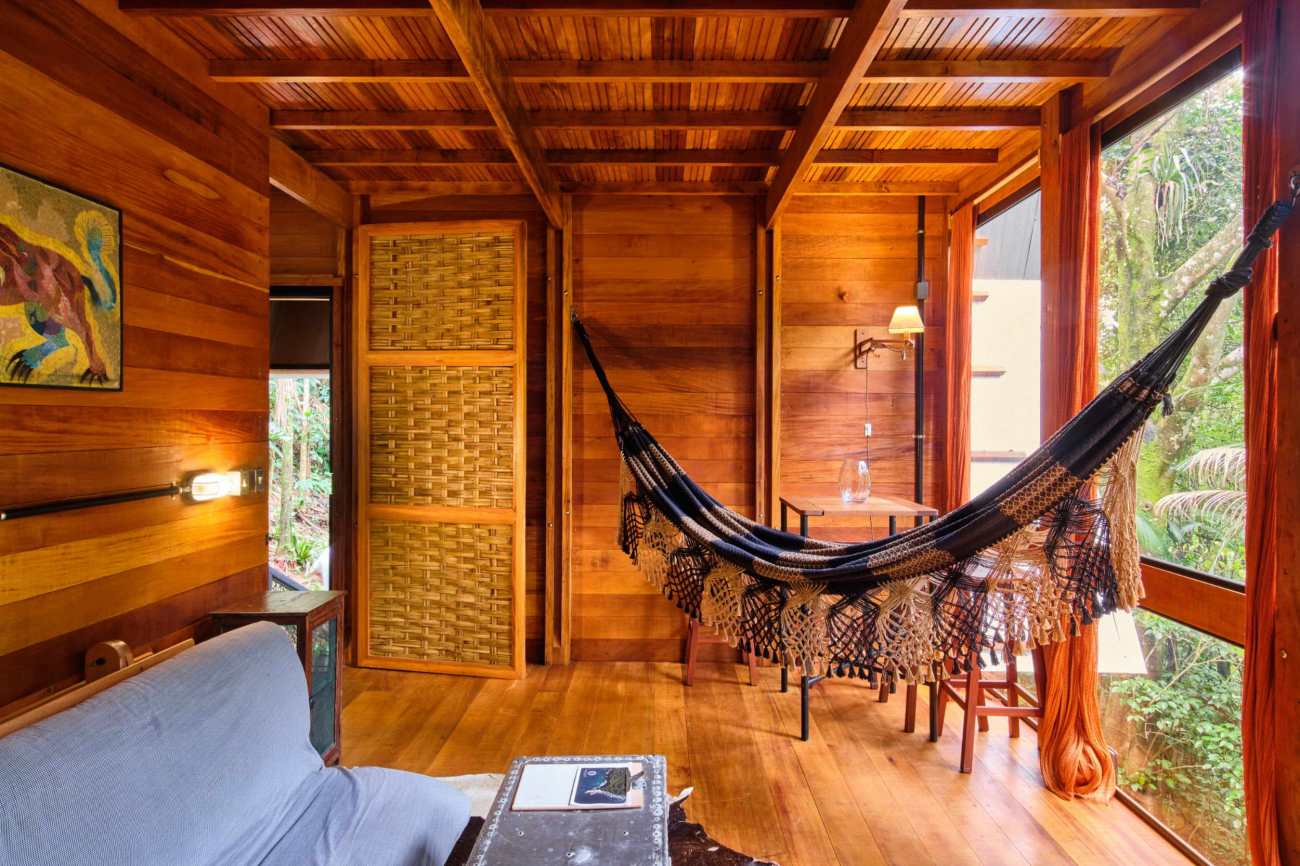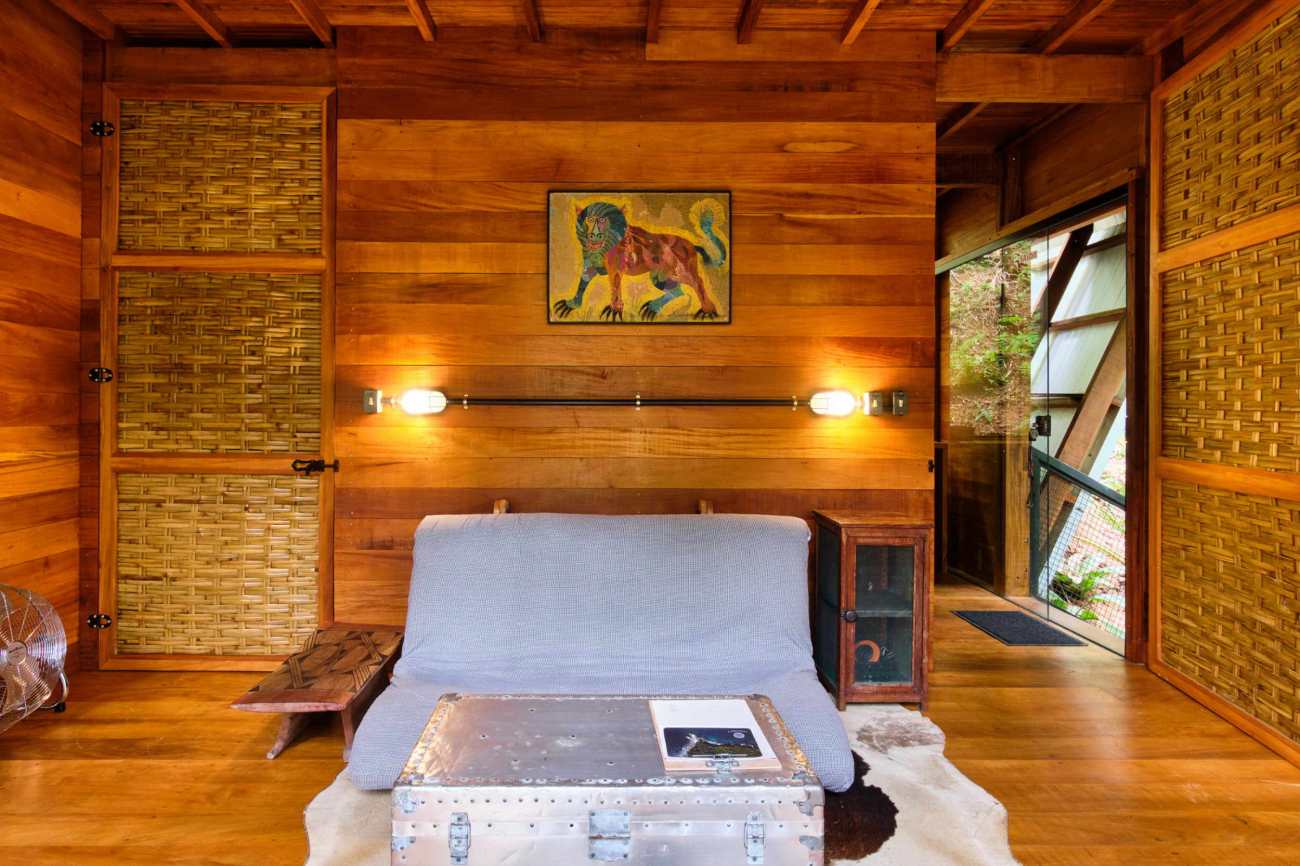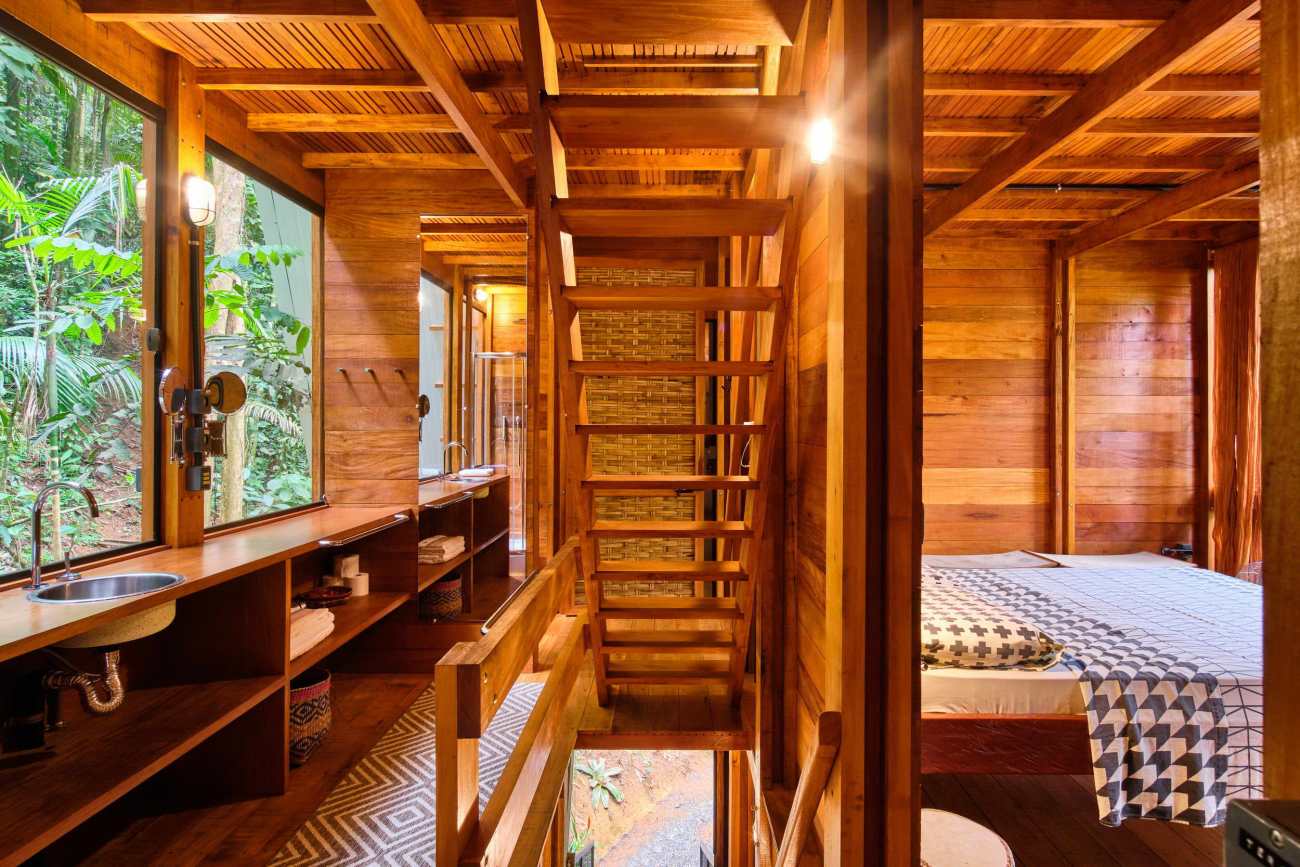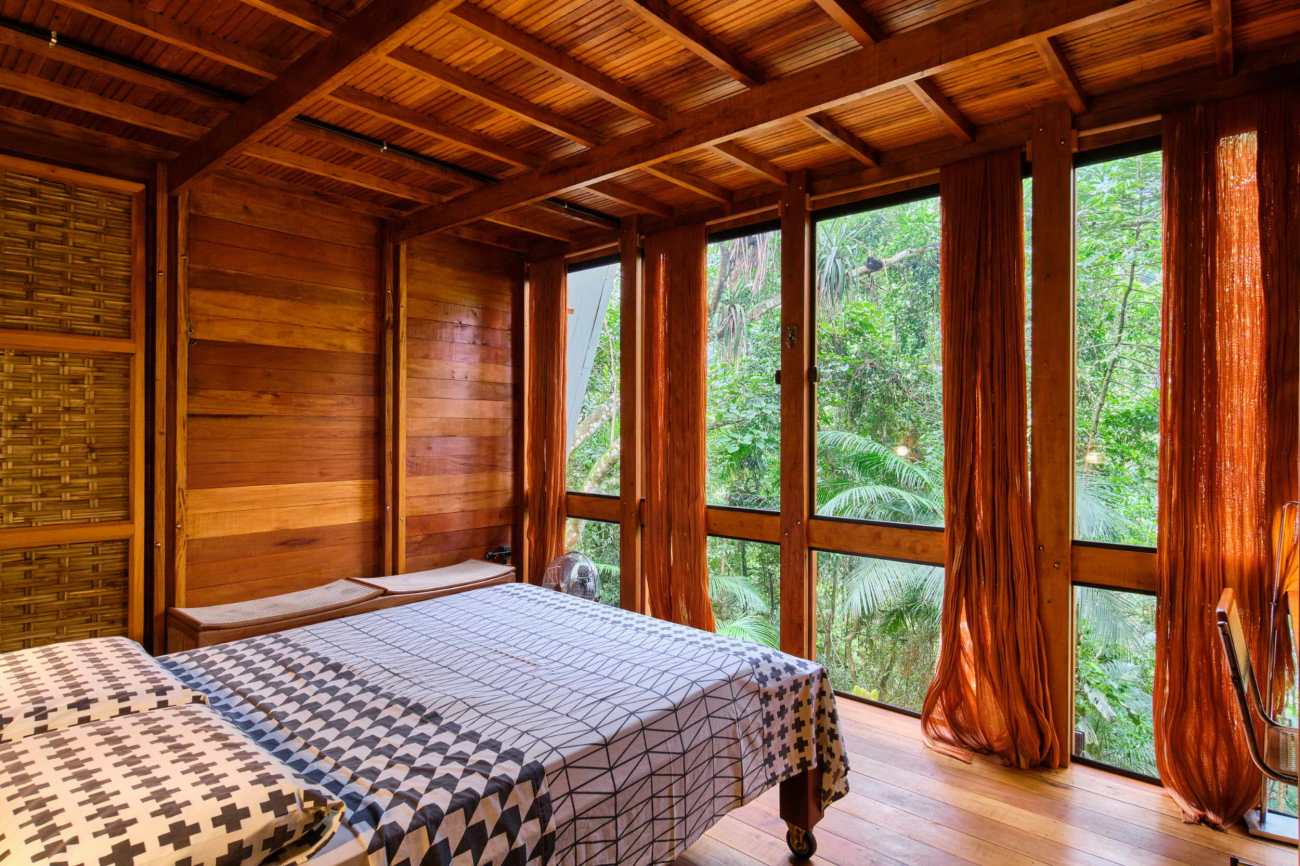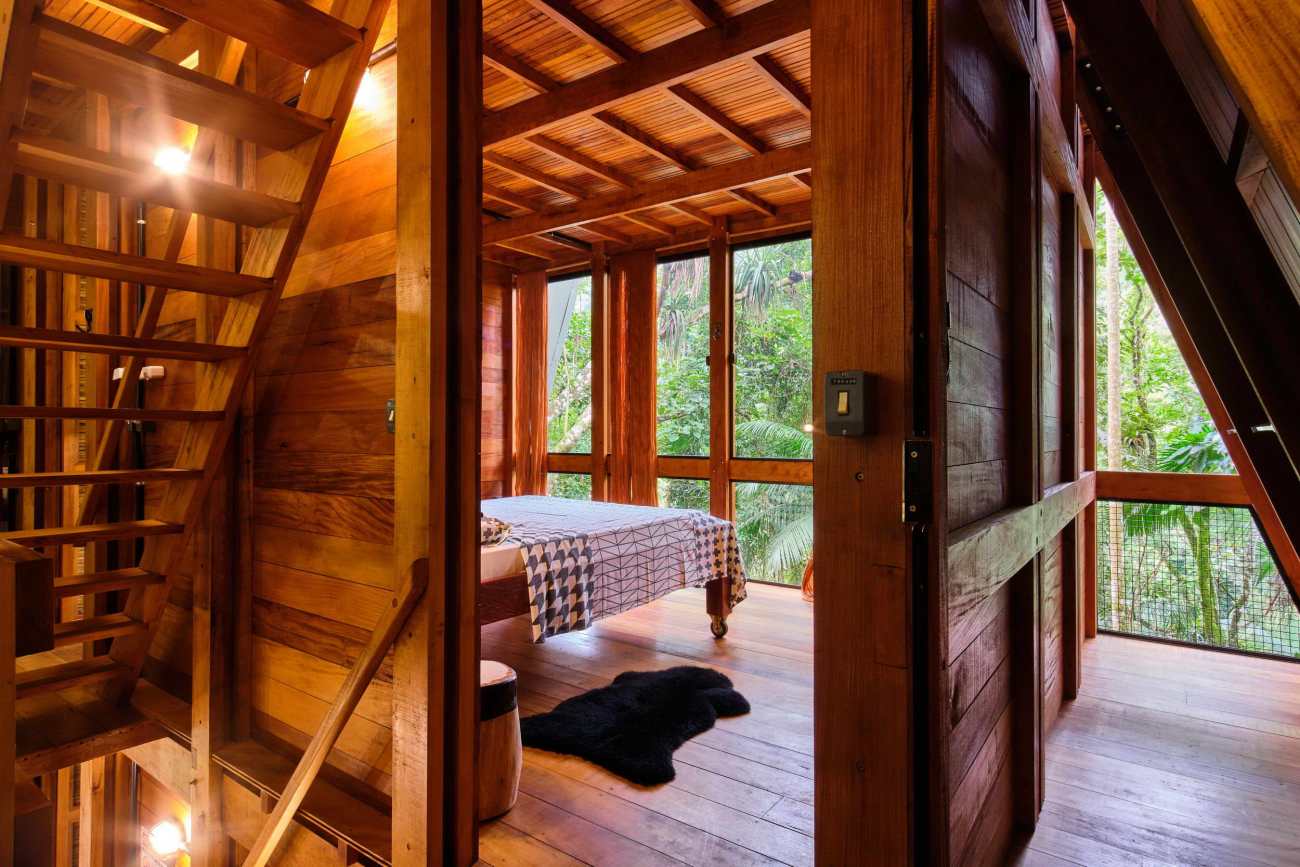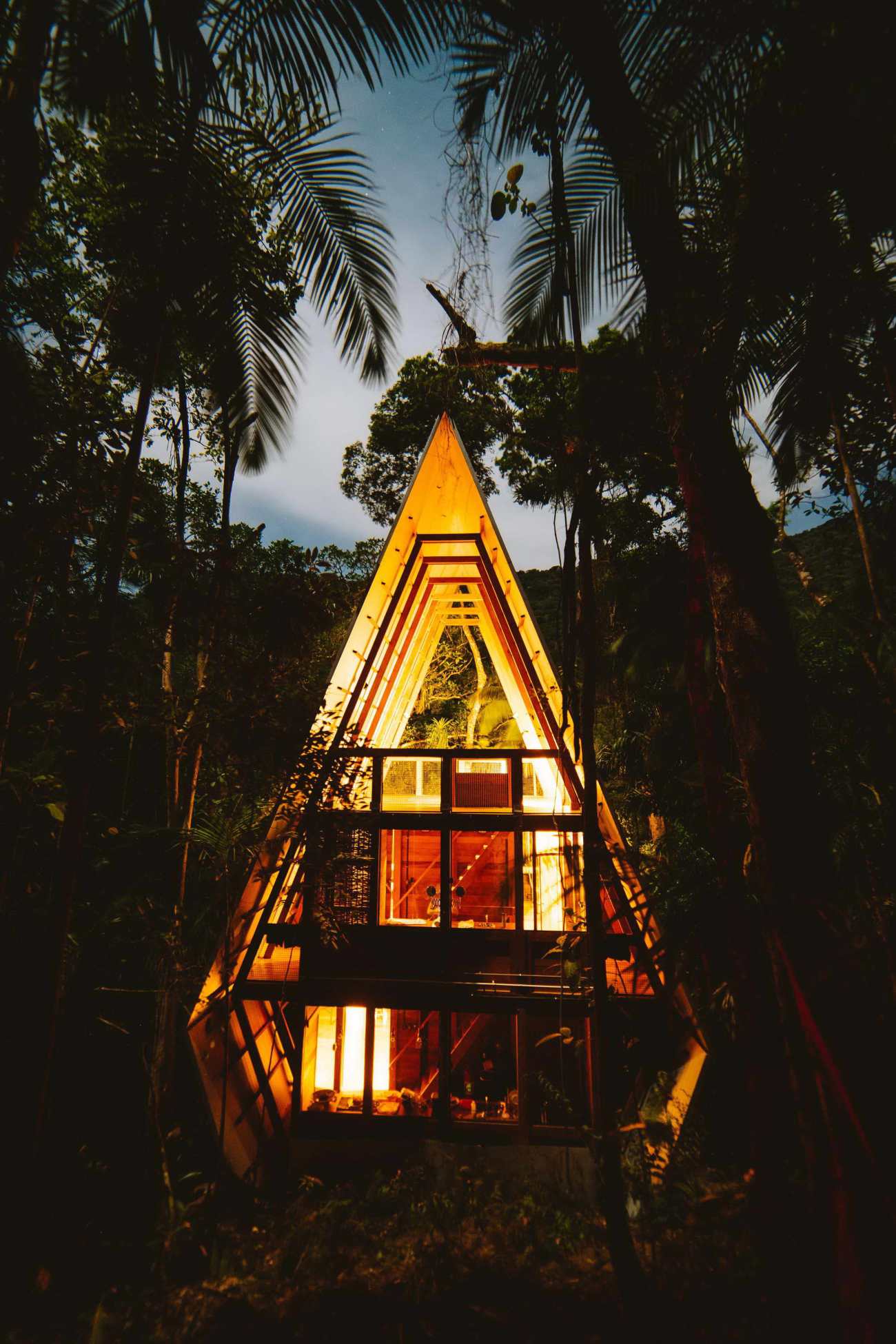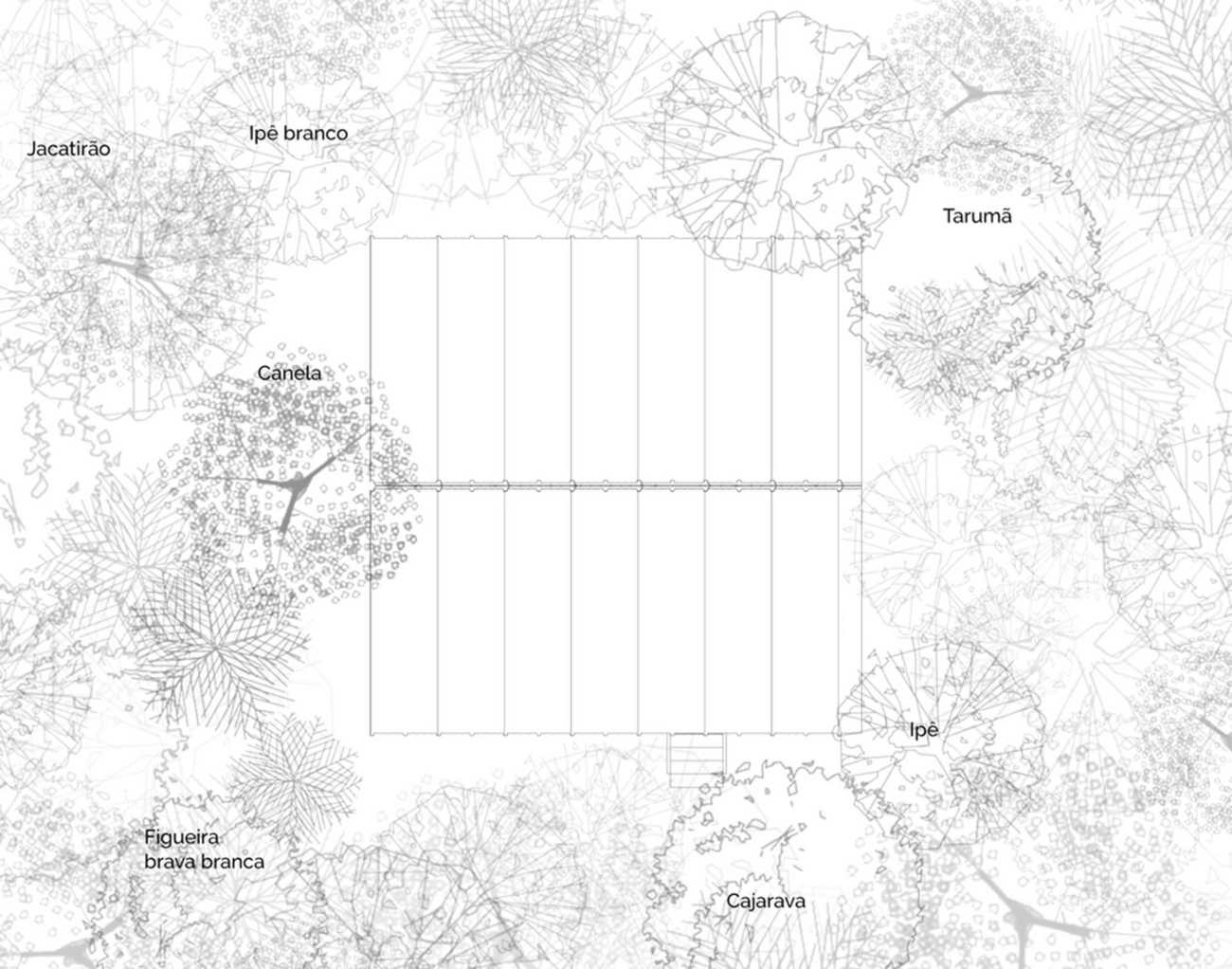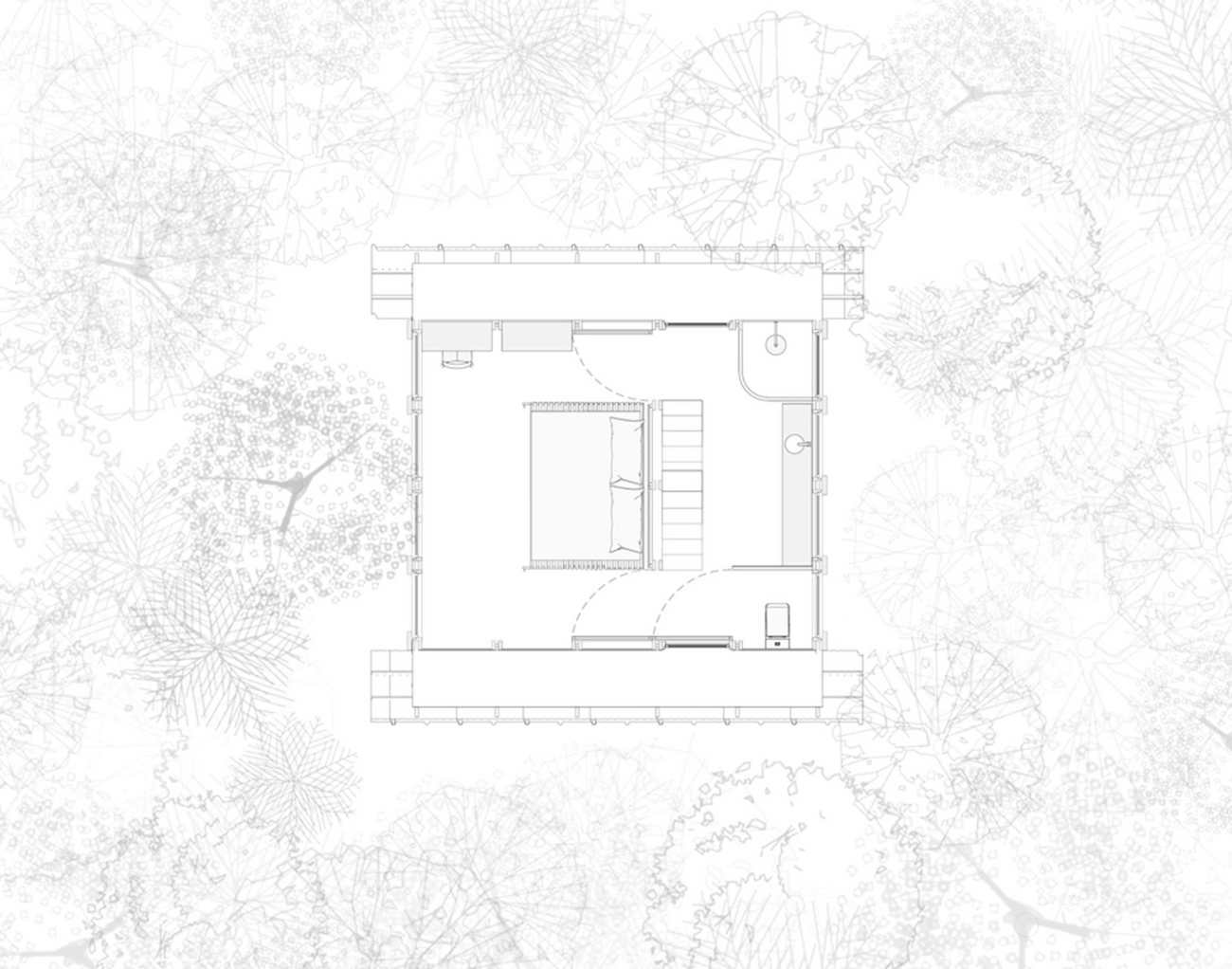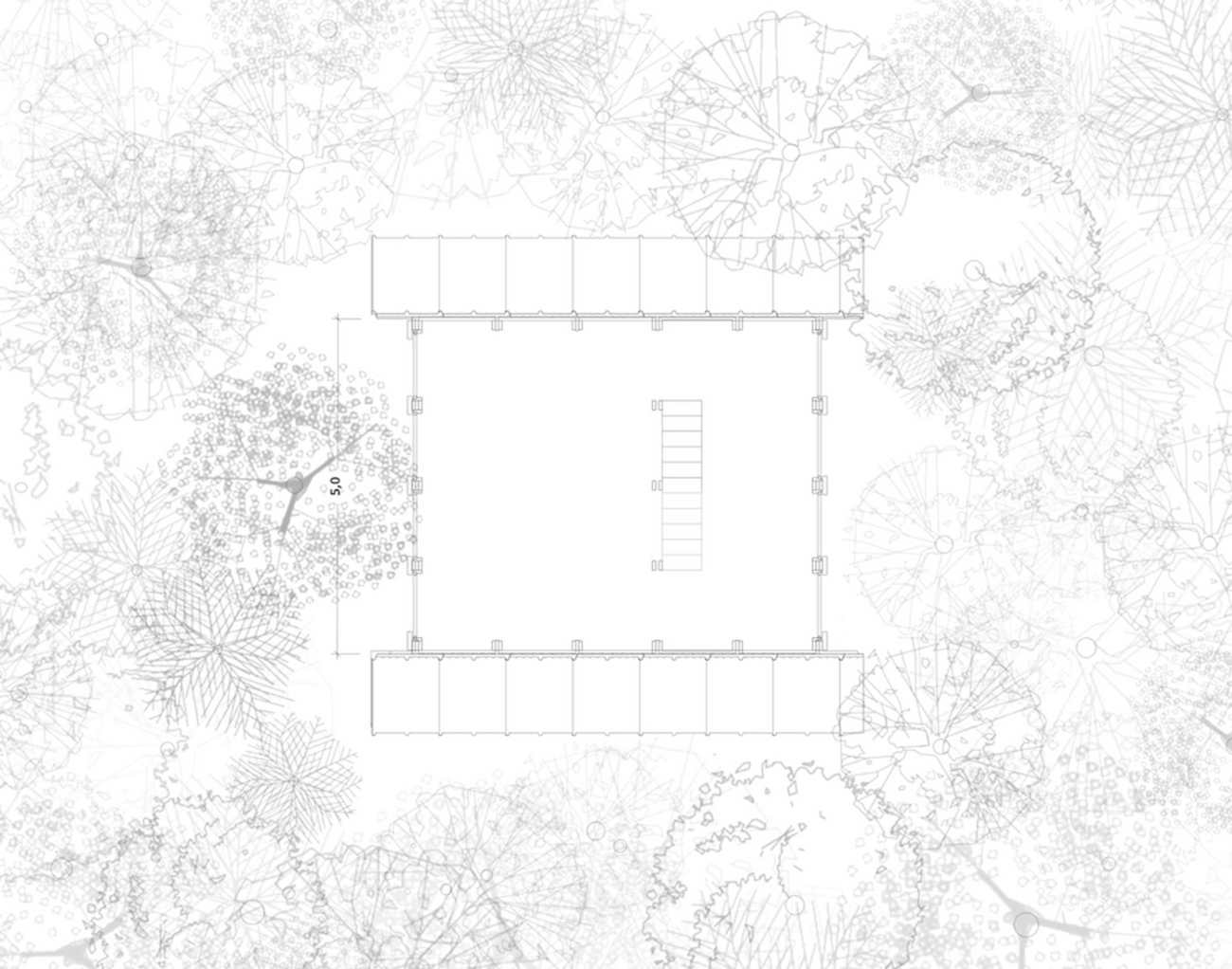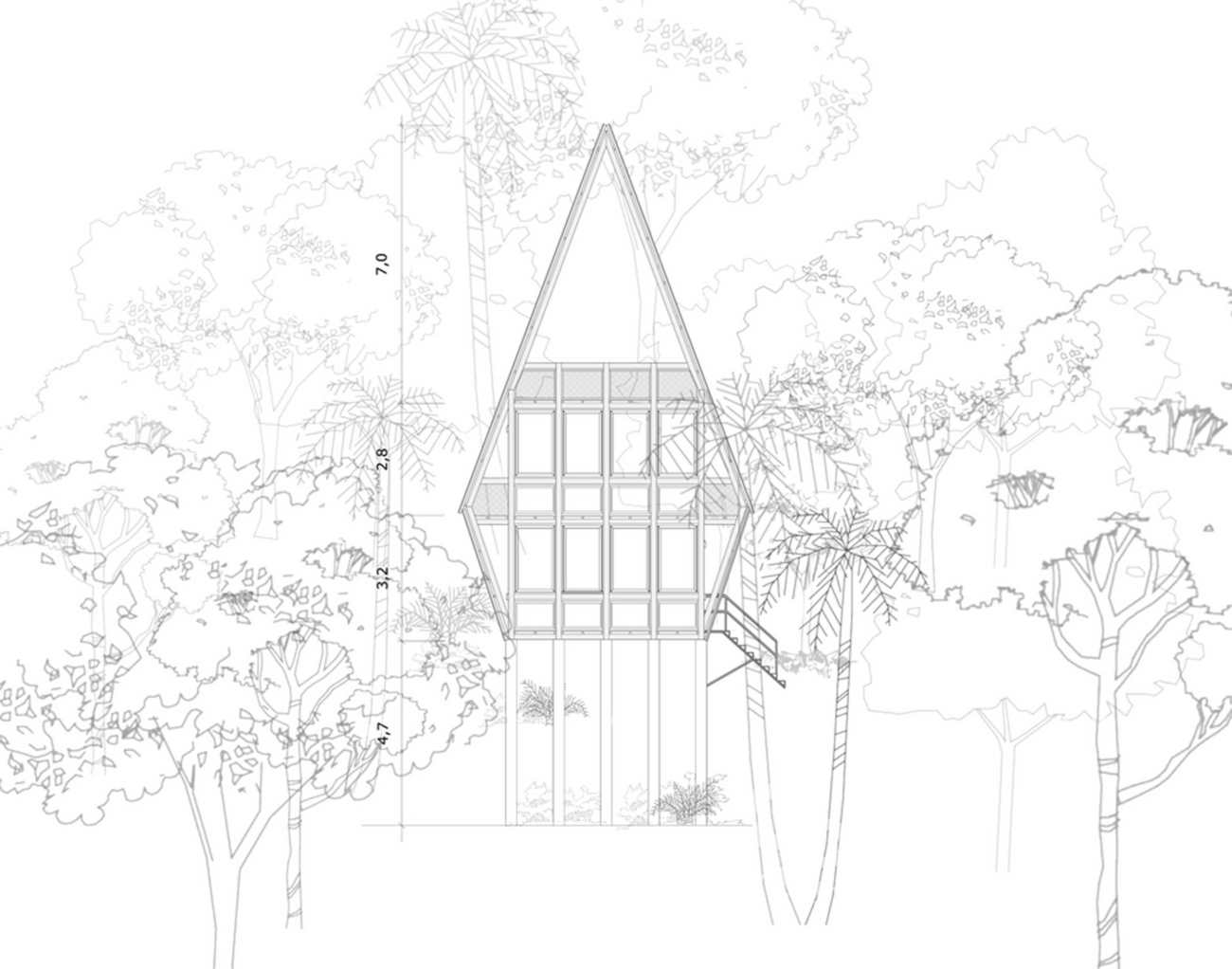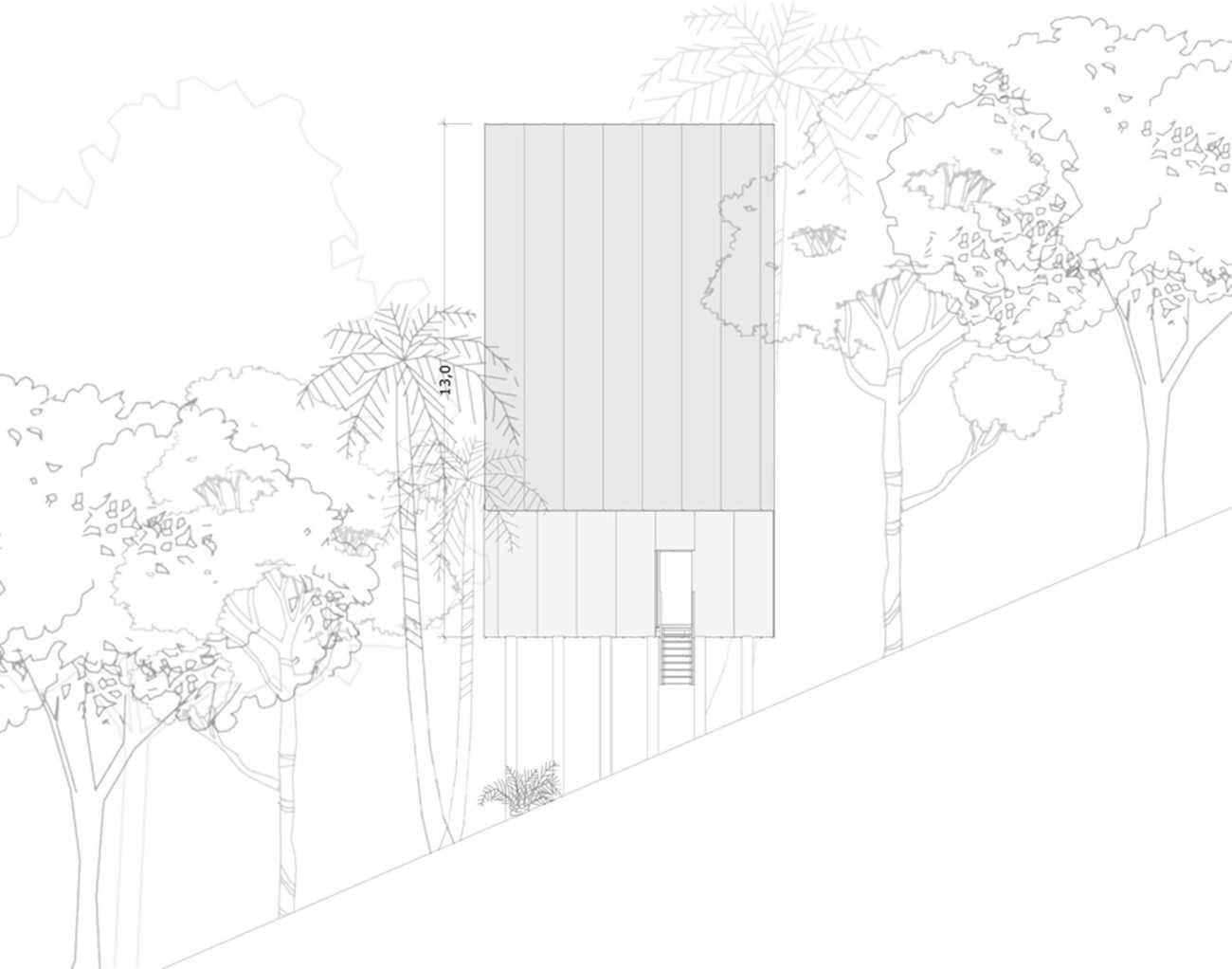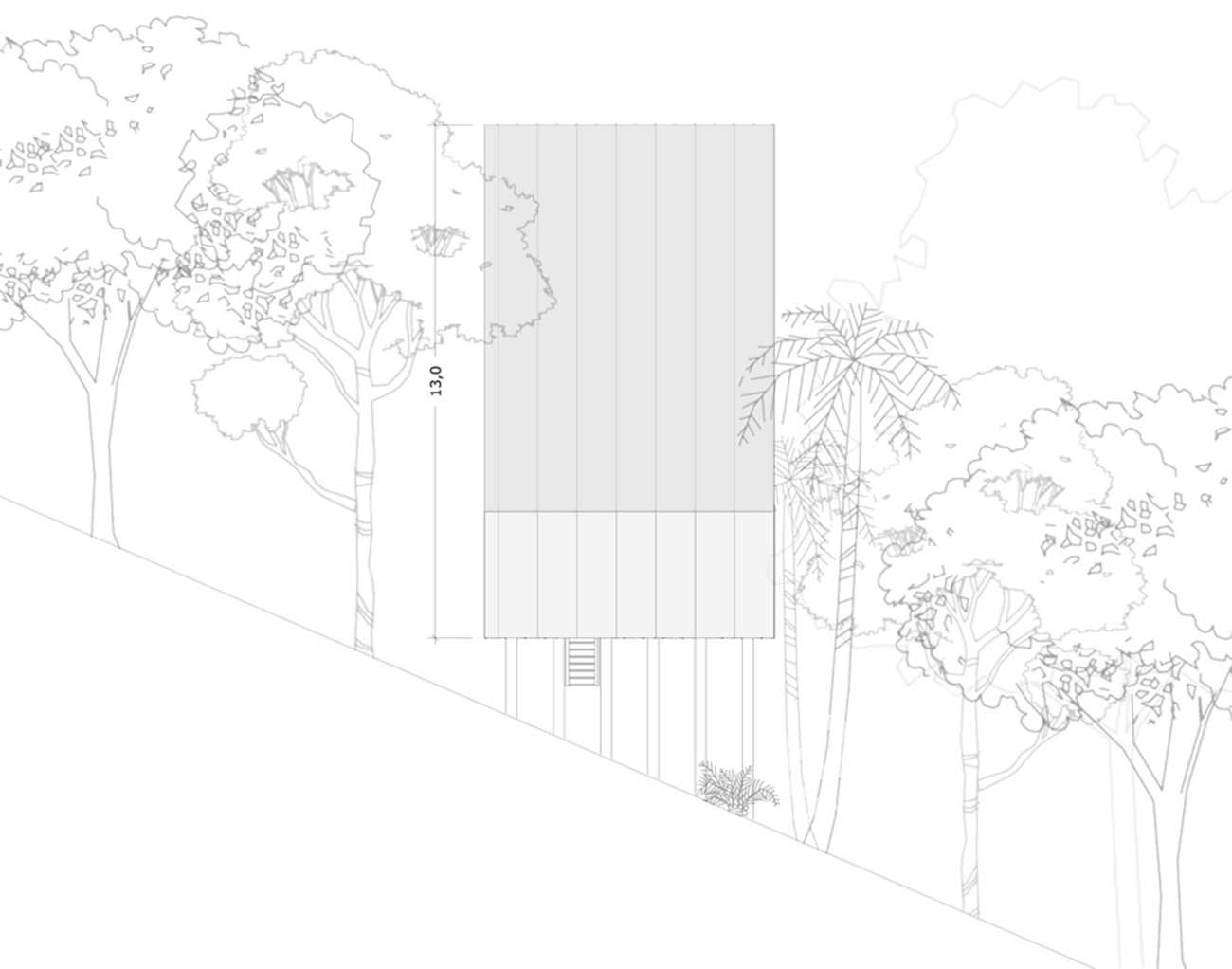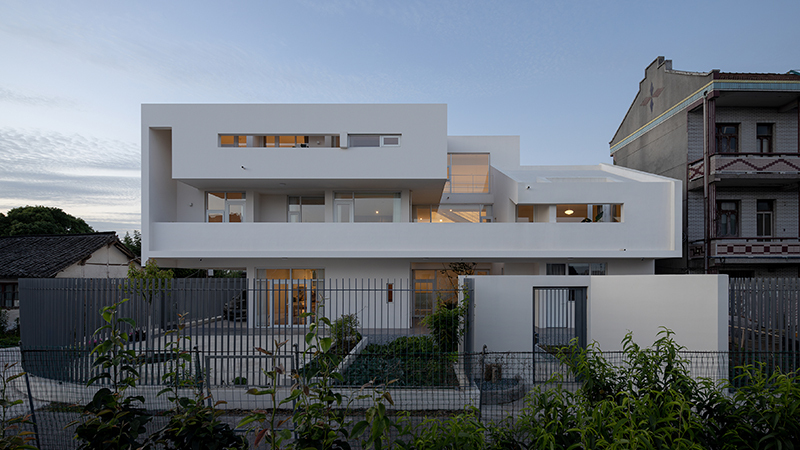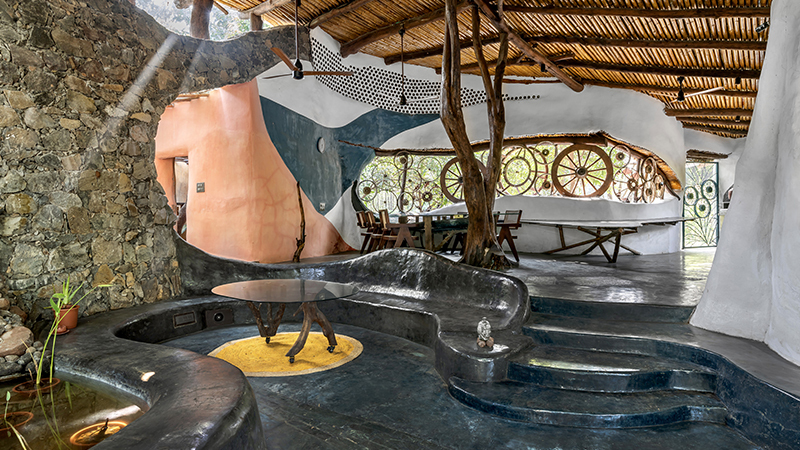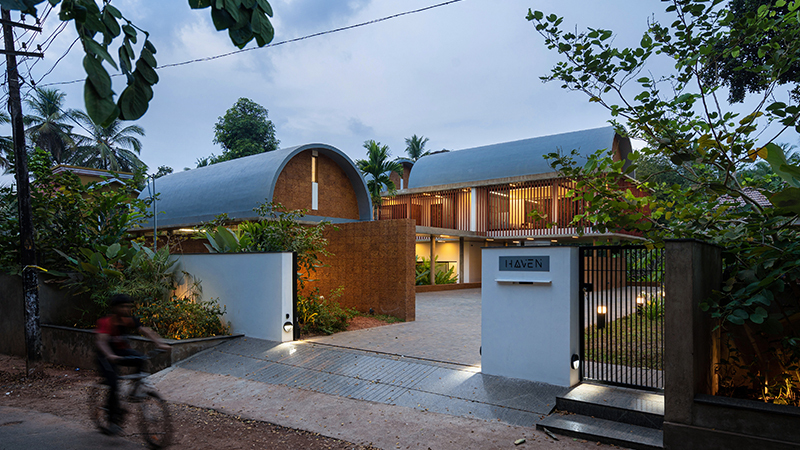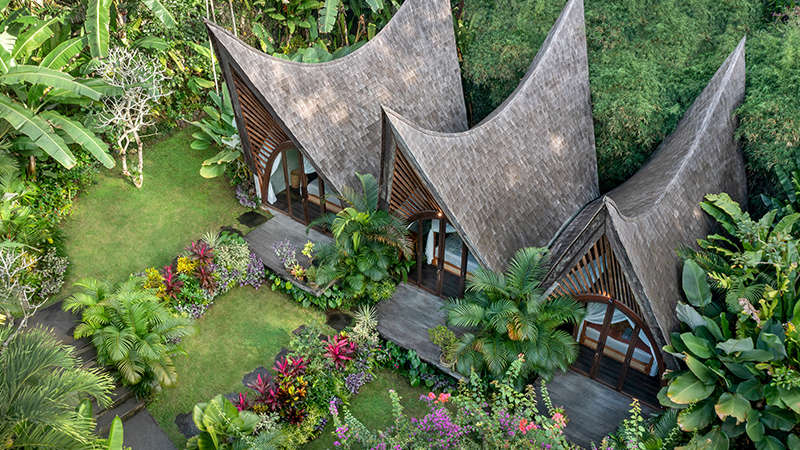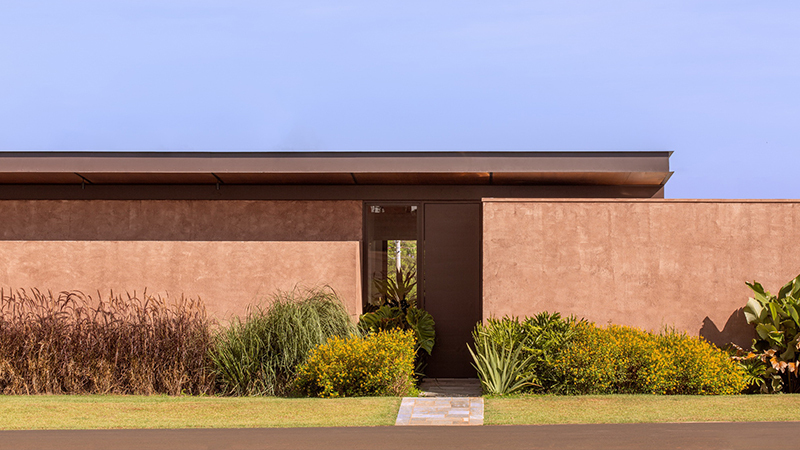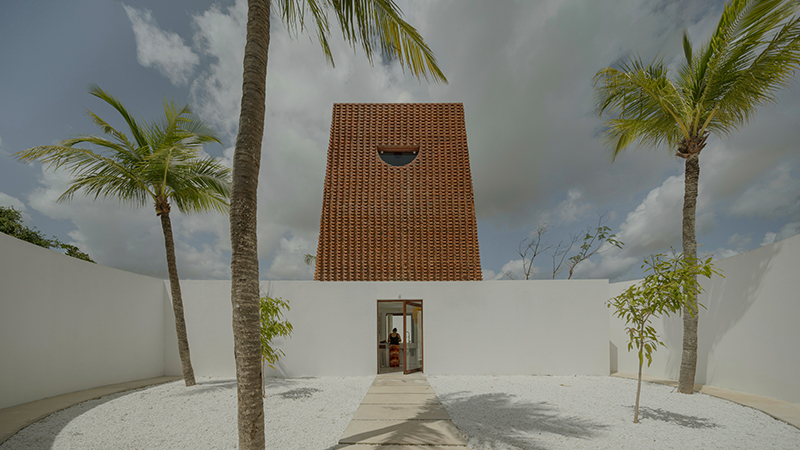| 公司: | Atelier Marko Brajovic | 类型: | 建筑 |
|---|---|---|---|
| 地区: | 巴西 | 标签: | 别墅私宅 |
几年前,住在帕拉蒂塞拉山脚下的猴子失踪了。据说是由于据说在灵长类动物家族中传播的黄热病,听说了这个消息后不知道为什么我们都很伤心。在2020年流行病爆发之初,我们开始考虑建造一座与树木大小相关的房子的那一天,它们出现了。一群卷尾猴,一个完整的部落!他们回来了,教我们设计项目的原因、地点和方法。项目的灵感来自于森林的垂直性,以一种柔和而微妙的方式接近树木的顶端,与动植物王国的无数居民联系在一起。
A few years ago the monkeys that lived at the foot of Serra in Paraty disappeared. It was said that it was due to the yellow fever that supposedly spread among the primate families. I don't know, we were very sad. At the beginning of the 2020 pandemic, the day we started thinking about a house that is connected to the magnitude of the trees, there they appeared. A family of Capuchin Monkeys, a complete tribe! They came back, and taught us the way of why, where and how to design our project. Monkey House was inspired by the verticality of the forest, in the possibility of approaching the crests of the trees, in a gentle and subtle way, connecting with its countless inhabitants of the kingdom of flora and fauna.
项目的结构由相互交错的木质构件(所有的构件都是相同的)协同工作,并由galvalume表皮和热声绝缘材料覆盖。房子组装在一个次生林中,安装在树木之间,占地仅5米x6米,从而避免了对原生植被的任何干扰。
The Monkey House structure works synergistically between interlocking wooden components (all of the same profile), covered by galvalume skin and thermoacoustic insulation. The house was assembled in a secondary forest, installed between trees, occupying just 5m x 6m area, thus avoiding any interference in the native vegetation.
 |  |
森林的感知是垂直的,而地平线是水平的的,所有动植物都遵循能量、物质和树木生长的信息流,引导我们寻找能量和阳光。在大自然中已经找到了最佳的设计方案。为了设计 "项目 "的支撑结构,我们在观察哪些植物最适合土地的地形,以及采取哪些策略使垂直生长的稳定性。图皮语中的 "Juçara "或 "Içara"(Euterpe edulis)是大西洋森林的一种特有棕榈树,它的结构是通过锚根,使自己适应倾斜的地形,并将动态的努力分布在多个载体上,以确保细而高的茎的稳定性。
The forest perception is vertical. The horizon is inverted, following the flow of energy, matter and information of the growth of trees that lead us in the search for energy and sunlight. The best design solutions are already found in Nature. In order to design the support structure of the Monkey House, we were observing which plants were best adapted to the topography of the land and which strategies were adopted to allow stability in the vertical growth. The “Juçara” or “Içara” (Euterpe edulis) in Tupi, is an endemic palm of the Atlantic Forest which is structured through anchor roots, adapting itself to the sloping terrain and distributing the dynamic efforts over multiple vectors ensuring stability for the thin and very tall stem.
对于项目,我们实施了同样的策略,创造了一系列细而密的支柱,灵感来自于胡卡拉棕榈树根部的临界形态,从而确保了垂直建筑的稳定性。项目的类型是一个垂直的房子,有两个卧室,由于厨房和浴室服务是由独立的流线组织的,所以可以转变为客厅。两侧的露台有利于交叉通风,顶层的宽大露台为身体活动、学习和冥想创造了一个多功能的环境。紧凑的房子有54平方米的内部面积和另外32平方米的覆盖面积,提供了一个非常强大的连接与森林的自然环境。
For the Monkey House project we implemented the same strategy, creating a series of thin and dense pillars, inspired by the adventist morphology of the roots of the Juçara palm, thus ensuring stability of the vertical construction. The typology of Monkey House is a vertical house with two bedrooms that can be transformed into living rooms thanks to the kitchen and bathroom services being organized by independent flows. Two side terraces favor cross ventilation and a generous terrace on the top floor creates a multifunctional environment for physical activities, study and meditation. The compact house has 54m2 of internal area and another 32m2 of covered areas, providing a very strong connection with the natural context of the forest.
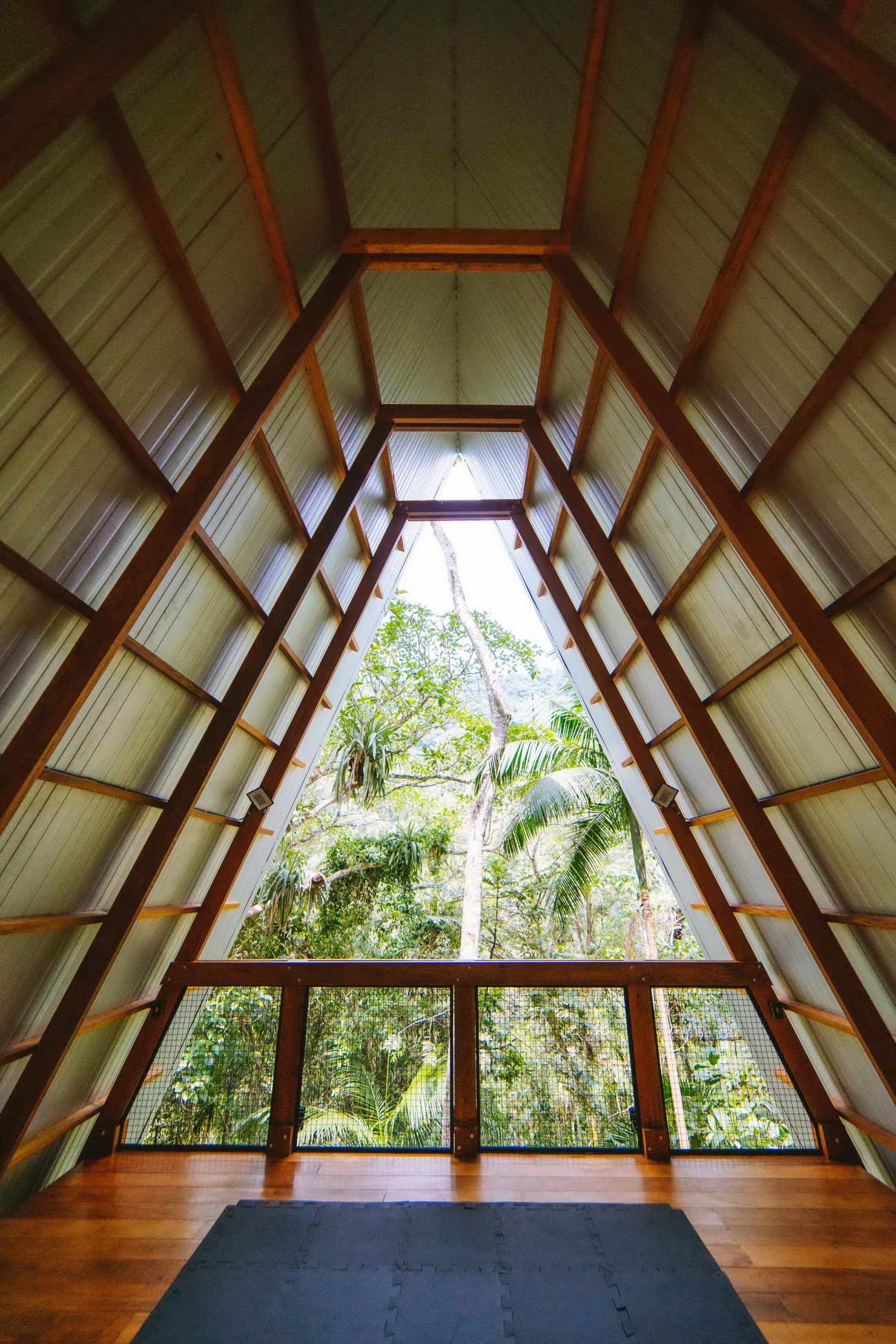 | 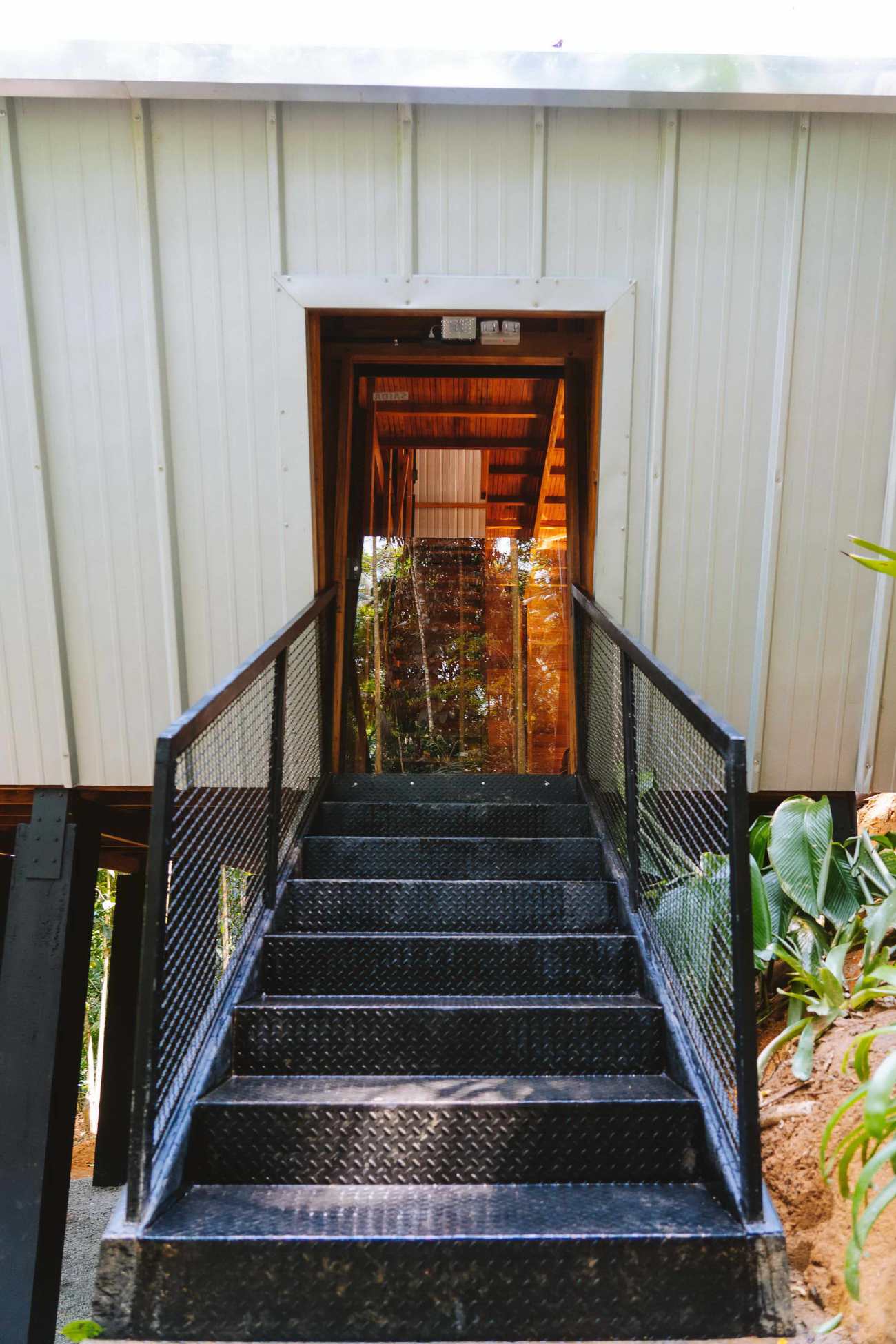 |
室内设计采用手工竹子制作的饰面,窗帘采用当地社区的渔网制作,家具将日本设计物品与瓜拉尼土著手工艺相结合,所有金属都来自Docol和Mekal的专业和签约生产线。景观设计项目只是对房子所在的次生林进行重新造林。通过带动周围同样的特有植物的自然生长,使得房子周围的野生美学成为可能,从而强化了房子沉浸在原始自然环境中的体验。
The interiors are designed using handmade bamboo production finishes, curtains made with fishing net from local communities, furniture combines Japanese design objects with indigenous Guarani handicrafts, and all metals are from Docol and Mekal's professional and signed lines. The landscaping project is simply the reforestation of the secondary forest where the house is located. The wild aesthetic surrounding the house was possible by driving the natural growth of the same endemic plants from the surroundings, thus reinforcing the experience of the house being immersed in an original natural context.
项目向各个方向开放,得益于内部的侧阳台和顶层的阳台,从而提供了自然通风和有盖的户外空间。项目是一个观察站。一个与自己和其他物种相遇和重逢的地方,观察我们外部和内部的自然,一切都在一切之中。
Monkey House opens in all directions, thanks to internal side terraces and the balcony on the top floor, thus providing natural ventilation and covered outdoor spaces. The Monkey House is an observatory. A place of encounter and reunion with yourself and other species, to observe Nature outside and inside us, where everything is in everything.
▽场地平面图 Site plan
▽一层平面图 First floor plan
▽二层平面图 Second floor plan
▽三层平面图 Third floor plan
▽剖面图 Section
▽立面图 Elevation
▽立面图 Elevation
Project name: Monkey House
Office: Atelier Marko Brajovic
Website: www.markobrajovic.com
Contact Email: marko@markobrajovic.com
Office location: Artur de Azevedo 51, 05404-010 Pinheiros, São Paulo, Brazil
Year of Construction: 2020
Total construction area: 86m2
Location of the project: Paraty, RJ, Brasil
Lider architect: Marko Brajovic
Project team: Marko Brajovic, Bruno Bezerra, Vitoria Mendes, Maira Shinzato
Client: Aldeia Global
Engineering: Atelier Marko Brajovic
Landscape Design: Atelier Marko Brajovic
Construction: Hybrida Production
Collaborations: Docol, Mekal.
Photographers: Rafael Medeiros, Gustavo Uemura
更新日期:2021-01-11 15:46:22
非常感谢 Atelier Marko Brajovic 带来的精彩项目, 查阅更多Appreciations towards Atelier Marko Brajovic for sharing wonderful work on hhlloo. Click to see more works!
